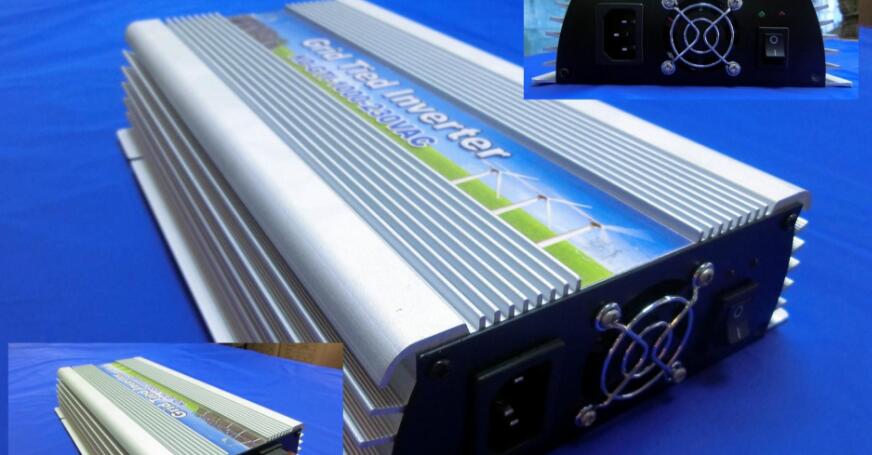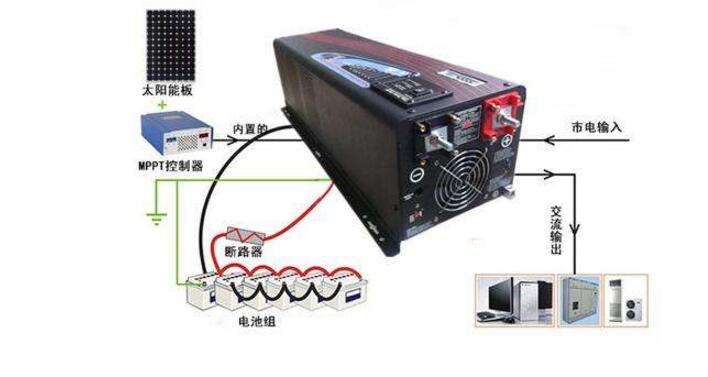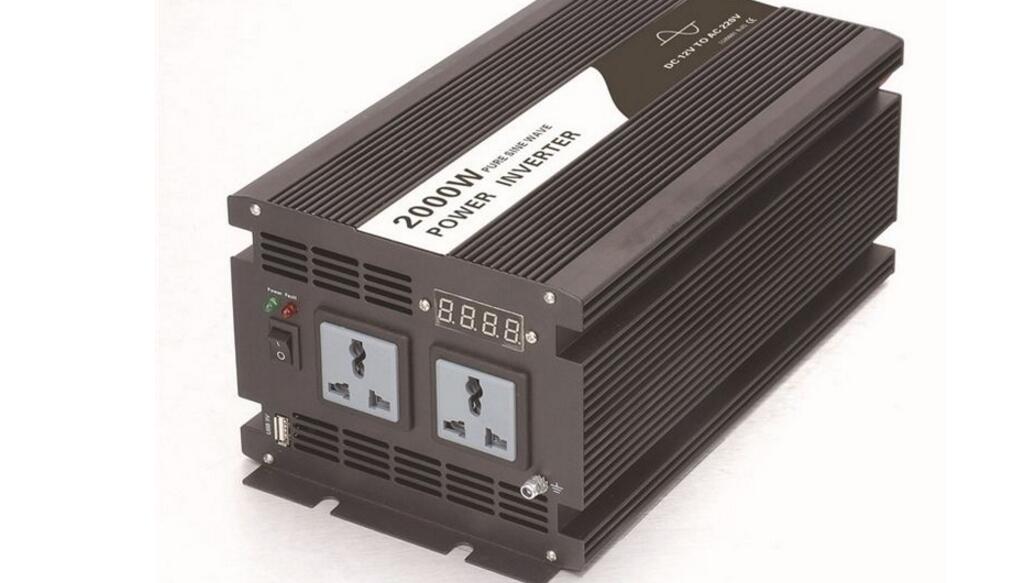In the process of producing solar inverters, more and more places have realized diversification; the reason there is such a trend, car inverters, sine wave inverters, electric vehicle inverters, among them All kinds of reasons, correct analysis, and clear understanding of all kinds of situations, will provide better protection for the future. Therefore, everyone must do a better job in advance so that they can be better. Use it. The diversification of solar inverters is mainly to increase conversion efficiency. In different places, the specific situation will be different. We want to achieve better conversion efficiency. Then we should choose according to local conditions. Better conversion will ensure the use of solar energy, and it will also reduce the cost of initial construction. It is important for each place. The buildings in the city are diversified. We want to make better use of solar energy. At this time, we should also take into account the beauty of various buildings. After real diversification, this will be more secure for beauty. RV inverter, ice cream machine inverter, (electric vehicle inverter), LED publicity vehicle inverter There are many different types of solar inverters on the market in order to meet the needs of various places, so it is realized This effect ensures future use. In summary, the application of diversity in the development of solar inverters is a very important trend. We can truly have more categories and have more styles. This will not only guarantee practicality and increase the efficiency of transformation, but it can also ensure aesthetics and truly achieve both. After achieving these aspects, the future use can guarantee the beauty and functionality. Solar Inverter Working Principle The process of converting DC power into AC power is called inverter, the circuit that completes inverter function is called inverter circuit, and the device that implements inverter process is called inverter device or inverter. . Inverters not only have direct-to-alternating power conversion functions, but also have the function of limiting the functions of solar cells and system fault maintenance. Summed up active operation and shutdown function, maximum power tracking control function, anti-self-operation function (for grid system), active voltage adjustment function (for grid system), DC detection function (for grid system), DC grounding detection Function (for grid system use). Here we briefly introduce active operation and shutdown functions and maximum power tracking control functions. 1. Active operation and shutdown function: After sunrise in the morning, the solar radiation intensity is gradually strengthened, and the output of the solar cell is also increased. After reaching the output power required by the inverter task, the inverter automatically starts operation. After entering the operation, the inverter will monitor the output of the solar cell module every moment, and only if the output power of the solar cell module is greater than the output power required by the inverter task, the inverter will continue to operate; until sunset, even if it stops Rainy days, inverters can also operate. When the output of the solar cell module becomes smaller and the output of the inverter approaches zero, the inverter constitutes a standby mode. 2. Maximum power tracking control function: The output of the solar cell module changes with the solar radiation intensity and the temperature of the solar cell module itself (chip temperature). In addition, because the solar cell module has the characteristic that the voltage decreases with the increase of the current, there is an optimal task point for obtaining the maximum power. The intensity of solar radiation is changing, and obviously the best task point is also changing. In relation to these changes, the task point of the solar cell module is always at the maximum power point, and the system always obtains the maximum power output from the solar cell module. This moderation is the maximum power tracking control. The biggest feature of inverters used in solar power systems is the inclusion of maximum power point tracking (MPPT). There are many parameters and technical conditions that describe the performance of the inverter. Here, only the technical parameters commonly used when evaluating the inverter are described briefly. 1. The environmental conditions of the inverter, and the normal operating conditions of the inverter: the altitude does not exceed 1000m, and the air temperature is 0 to +40°C. 2, DC input power conditions, input DC voltage fluctuation range: ± 15% of the rated voltage of the battery pack. 3. Rated output voltage, within the allowable fluctuation range of the specified input DC voltage, it represents the rated voltage that the inverter should be able to output. The stable accuracy of the output rated voltage is generally specified as follows: (1) In the steady-state operation, the voltage fluctuation range should have a limit, for example, the deviation does not exceed ±3% or ±5% of the rated value. (2) The output voltage deviation should not exceed ±8% or ±10% of the rated value under the dynamic conditions of sudden load changes or other interference factors. 4, the rated output frequency, the frequency of the inverter output AC voltage should be a relatively stable value, usually 50Hz. Under normal working conditions, the deviation should be within ±1%. 5. The rated output current (or rated output capacity) represents the rated output current of the inverter within the specified load power factor range. Some inverter products give rated output capacity, and their units are expressed in VA or kVA. The rated capacity of the inverter is when the output power factor is 1 (that is, a purely resistive load), and the rated output voltage is the product of the rated output current. 6. Rated output efficiency, the inverter's efficiency is the ratio of the output power to the input power under specified operating conditions, expressed in %. The efficiency of the inverter at rated output capacity is full-load efficiency, and the efficiency at 10% of rated output capacity is low-load efficiency. 7, the maximum harmonic content of the inverter, sine wave inverter, under the resistive load, the maximum harmonic content of the output voltage should be ≤ 10%. 8. The inverter's overload capacity, under the specified conditions, the ability of the inverter to output more than the rated current in a short period of time. The overload capacity of the inverter should meet certain requirements under the specified load power factor. 9. The efficiency of the inverter, the ratio of the output active power of the inverter to the input active power (or DC power) at rated output voltage, output current, and specified load power factor. 10. Load power factor, characterizing the inverter's ability to carry inductive or capacitive loads. Under sine wave conditions, the load power factor is 0.7 to 0.9 (lagging) and the rating is 0.9. 11. Asymmetry of the load: Under 10% asymmetric load, the asymmetry of the output voltage of the three-phase inverter with a fixed frequency should be ≤10%. 12, the output voltage imbalance, under normal operating conditions, the output voltage of the inverter three-phase voltage imbalance (the ratio of the reverse sequence component to the positive sequence component) should not exceed a specified value, generally expressed in %, such as 5 % or 8%. 13. Starting characteristics: Under normal operating conditions, the inverter shall be able to start normally for 5 consecutive times under full-load and no-load operating conditions. 14, the protection function, the inverter should be set: short circuit protection, over current protection, over temperature protection, over voltage protection, under voltage protection and phase loss protection. Among them, overvoltage protection means that for inverters with no voltage stabilization measures, output overvoltage protection measures should be taken so that the negative cutoff is protected from output overvoltage. Over-current protection refers to the over-current protection of the inverter. It should be able to ensure that when the load is short-circuited or the current exceeds the allowable value, it can be operated in time to protect it from inrush current. 15, interference and anti-interference, the inverter should be under the normal working conditions, can withstand the general environment of electromagnetic interference. The anti-interference performance and electromagnetic compatibility of the inverter shall comply with the relevant standards. 16. Inverters that are not frequently operated, monitored and maintained shall be ≤95db; inverters that are frequently operated, monitored and maintained shall be ≤80db. 17. Display: The inverter shall be equipped with data display of parameters such as AC output voltage, output current and output frequency, as well as signal display of input electrification, power-on and fault status. 18, communication function, remote communication function allows users to view the machine's operating status and stored data without having to go to the scene. 19.. The waveform distortion of the output voltage, when the inverter output voltage is sinusoidal, should specify the maximum allowable waveform distortion (or harmonic content). Usually expressed as the total waveform distortion of the output voltage, the value should not exceed 5% (single-phase output allows 10%). 20. Start-up characteristics, characterizing the ability of the inverter to start with load and dynamic performance. The inverter should ensure reliable starting under rated load. 21, noise, power electronic equipment in the transformer, filter inductors, electromagnetic switches and fans and other components will produce noise. When the inverter is operating normally, the noise should not exceed 80dB, and the noise of the small inverter should not exceed 65dB. 1. Strictly follow the requirements of the inverter use and maintenance instructions to connect and install the equipment. During installation, it is necessary to carefully check: whether the wire diameter meets the requirements; whether the components and terminals are loose during transportation; whether the insulation is in good insulation; and whether the system grounding is in compliance with the regulations. 2. Operation and use should be strictly in accordance with the inverter's use and maintenance instructions. In particular: Before starting up, pay attention to whether the input voltage is normal or not. When operating, pay attention to whether the sequence of the switch is correct and whether the indicators of the indicators and indicators are normal. 3. Inverters generally have automatic protection of open circuit, over-current, over-voltage, overheating, etc. Therefore, when these phenomena occur, no manual shutdown is required; the protection point of automatic protection is generally set at the factory without Adjust again. 4. There is high voltage in the inverter cabinet. Operators are generally not allowed to open the cabinet door. The cabinet door should normally be locked. 5. When the room temperature exceeds 30°C, cooling and cooling measures shall be taken to prevent equipment failure and extend the service life of the equipment. 1. Regularly check whether the wiring of each part of the inverter is firm and loose or not. In particular, fans, power module, input terminals, output terminals, and grounding should be inspected carefully. 2. Once the alarm is stopped, it is forbidden to turn on the machine immediately. The cause should be identified and repaired before starting the operation. The inspection should be carried out in strict accordance with the provisions of the inverter maintenance manual. 3, the operator must be specially trained to be able to determine the cause of the general failure, and can be eliminated, such as skilled replacement of fuses, components and damaged circuit boards. Untrained personnel are not allowed to operate and use equipment. 4. If the cause of an accident or accident that cannot be easily eliminated is unclear, a detailed record of the accident shall be made and the manufacturer of the inverter shall be notified promptly to resolve it.
Safety is always a primary consideration when designing a solar system, but it becomes even more important when your system is on a boat far from shore, or an RV on a remote road. Different battery chemistries have different risk factors. Obviously, abusing any type of battery can create a dangerous situation. But with normal, and perhaps even a bit of rough treatment, the different batteries have different safety concerns that need to be addressed.
Storage Battery Pack,Power Pack Home,Battery Storage Pack,Battery Pack Storage Shenzhen Zhifu New Energy Co., Ltd. , https://www.sunbeambattery.com


Lead Acid vs. Lithium: Safety
Why to realize the diversity of solar inverters
April 13, 2023